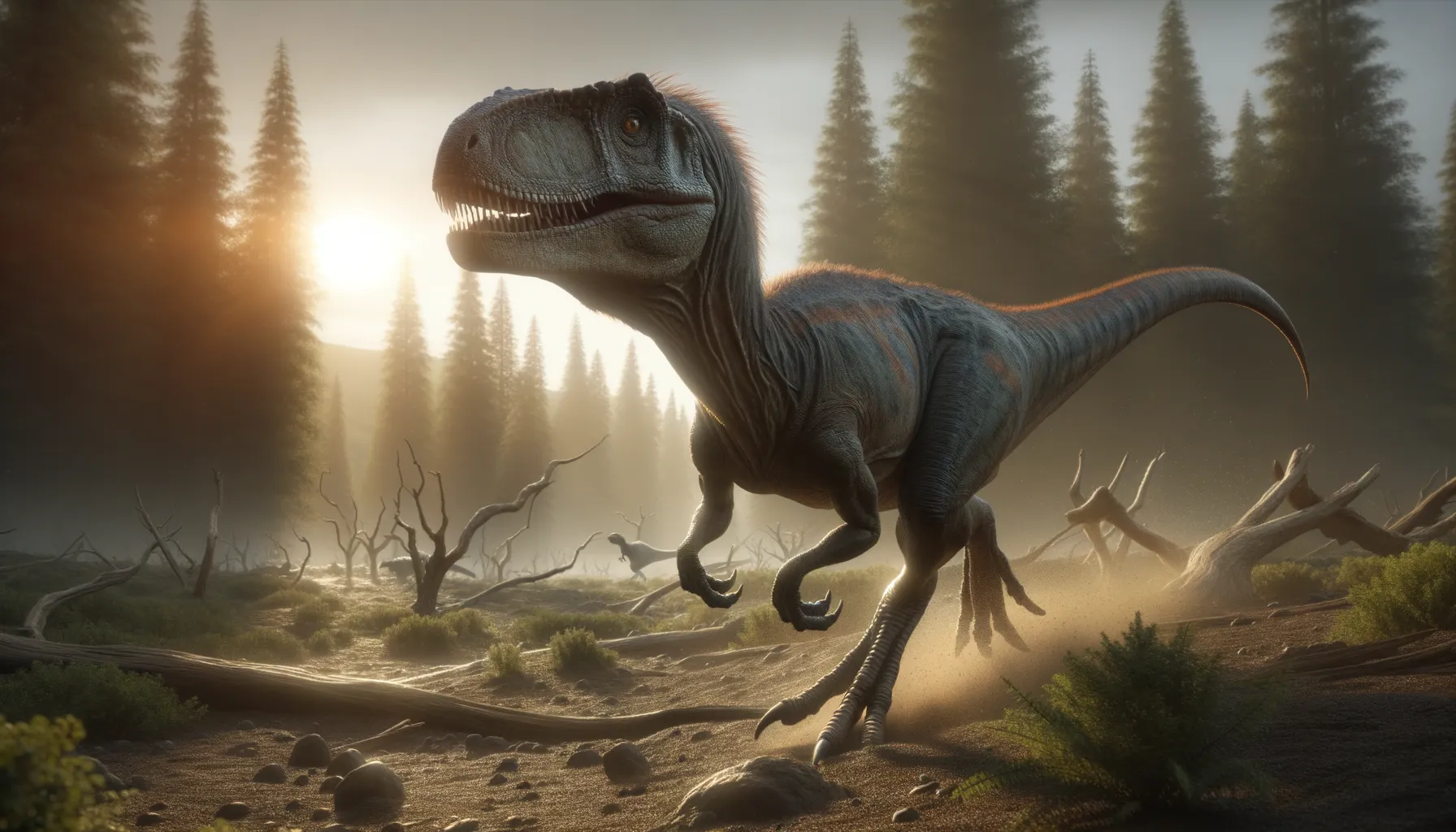
Ozraptor
An agile spirit of the Jurassic era.
Period
Jurassic
Length
Roughly 2 meters long.
Height
About 1 meter tall.
Weight
Approximately 20 kilograms.
Ozraptor was a small theropod dinosaur from the mid-Jurassic period. Known primarily from a single shinbone fossil, it was discovered in Australia. This dinosaur was bipedal and likely agile, characteristics that helped it thrive in its prehistoric environment. Though specific details about its life remain elusive, Ozraptor is an integral piece of the puzzle in understanding Australia's dinosaur fauna from this period.
Diet
Ozraptor was likely a carnivore, feeding on small animals such as insects, lizards, and possibly small mammals. Given its size, it would have relied on speed and stealth to catch prey.
Hunting
It likely hunted alone, relying on its agility to surprise its prey. With keen senses, it would track down opportunities for meals, leveraging the dense vegetation for cover.
Environmental challenges
During Ozraptor's time, the climate was moist and mild, presenting challenges like flooding or food scarcity. Navigating dense forest habitats, these dinosaurs would face predators and competition for resources. Environmental changes brought about shifts in available prey, necessitating adaptability in hunting strategies.
Speed
Likely swift, aiding in quick pursuits or escapes.
Lifespan
Potentially lived several decades based on related species.
First discovery
Discovered in 1967 in Australia.
Fun Facts
- Ozraptor was a small, bipedal dinosaur that lived in Australia during the Jurassic period, around 170 million years ago.
- The name 'Ozraptor' means 'Australian thief,' which reflects its place of discovery in Australia.
- Ozraptor is known from a single fragmentary fossil, making it one of the more mysterious dinosaurs from Down Under.
- This dinosaur was likely a fast runner, thanks to its long, slender legs, which would have been great for catching prey or escaping predators.
- Ozraptor is believed to have been a carnivore, feeding on small animals and insects with its agile movements.
- The fossil of Ozraptor was discovered in the 1960s but wasn't scientifically described until the 1990s.
- Although the fossil evidence is limited, Ozraptor provides valuable insights into the diversity of prehistoric life in Australia.
Growth and Development
Ozraptor hatchlings would have been small and vulnerable, relying on rapid growth to achieve safety from predators. As they developed, strength and speed were crucial for survival. Learning to hunt and evade larger threats would be essential to reaching adulthood.
Habitat
Ozraptor inhabited regions with lush vegetation and well-watered environments. Its home terrain included forests and floodplains, providing ample cover and hunting grounds. Seasonal changes might have influenced its movement in search of adequate food and shelter.
Interaction with other species
Ozraptor coexisted with various other dinosaurs, from herbivores to larger carnivores. Competition and predation likely shaped its daily life strategies. Interactions could have involved direct conflict or avoidance tactics, as smaller predators often moved stealthily to avoid larger threats.
Natural lifespan
Its natural lifespan may have ranged from 10 to 20 years.
Reproduction
As with many theropods, Ozraptor likely laid eggs in nests built from gathered vegetation. Parental care may have included guarding the nest or young juveniles until they matured enough to fend for themselves. Clutch sizes are unknown but could have been moderate.
Social behaviour
There is limited evidence of social behavior, suggesting it may have led a solitary lifestyle. However, like many dinosaurs, occasional gatherings could have occurred during mating seasons. Solitary hunting and territory marking might have been typical behaviors.
Fossil locations
Its fossils have been found exclusively in the Talbragar Fossil Site in Australia. This region provides a rare glimpse into Australia's Jurassic fauna. The discovery site is noted for its exceptionally preserved fossils.
